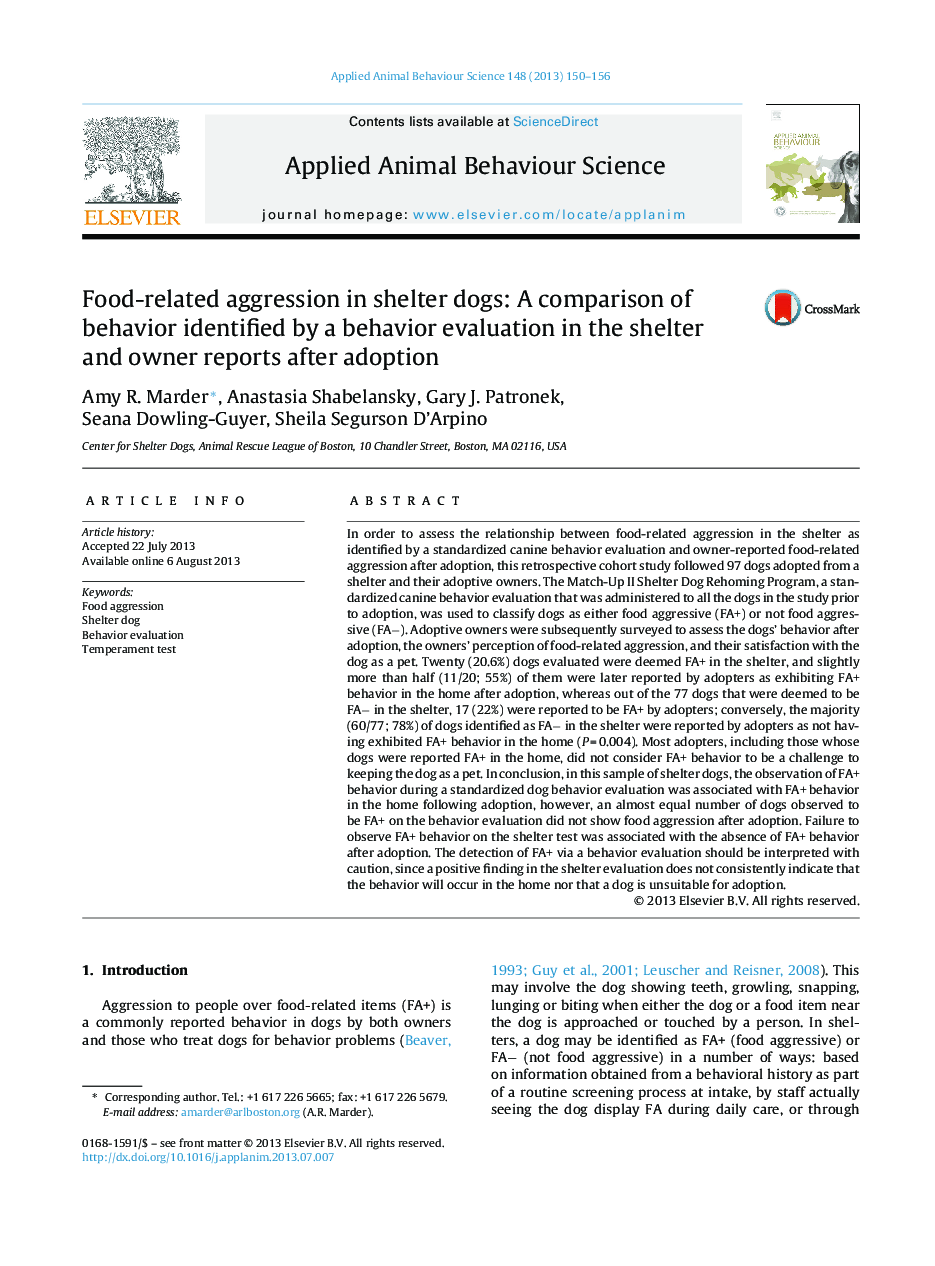| کد مقاله | کد نشریه | سال انتشار | مقاله انگلیسی | نسخه تمام متن |
|---|---|---|---|---|
| 4522705 | 1625359 | 2013 | 7 صفحه PDF | دانلود رایگان |

In order to assess the relationship between food-related aggression in the shelter as identified by a standardized canine behavior evaluation and owner-reported food-related aggression after adoption, this retrospective cohort study followed 97 dogs adopted from a shelter and their adoptive owners. The Match-Up II Shelter Dog Rehoming Program, a standardized canine behavior evaluation that was administered to all the dogs in the study prior to adoption, was used to classify dogs as either food aggressive (FA+) or not food aggressive (FA−). Adoptive owners were subsequently surveyed to assess the dogs’ behavior after adoption, the owners’ perception of food-related aggression, and their satisfaction with the dog as a pet. Twenty (20.6%) dogs evaluated were deemed FA+ in the shelter, and slightly more than half (11/20; 55%) of them were later reported by adopters as exhibiting FA+ behavior in the home after adoption, whereas out of the 77 dogs that were deemed to be FA− in the shelter, 17 (22%) were reported to be FA+ by adopters; conversely, the majority (60/77; 78%) of dogs identified as FA− in the shelter were reported by adopters as not having exhibited FA+ behavior in the home (P = 0.004). Most adopters, including those whose dogs were reported FA+ in the home, did not consider FA+ behavior to be a challenge to keeping the dog as a pet. In conclusion, in this sample of shelter dogs, the observation of FA+ behavior during a standardized dog behavior evaluation was associated with FA+ behavior in the home following adoption, however, an almost equal number of dogs observed to be FA+ on the behavior evaluation did not show food aggression after adoption. Failure to observe FA+ behavior on the shelter test was associated with the absence of FA+ behavior after adoption. The detection of FA+ via a behavior evaluation should be interpreted with caution, since a positive finding in the shelter evaluation does not consistently indicate that the behavior will occur in the home nor that a dog is unsuitable for adoption.
Journal: Applied Animal Behaviour Science - Volume 148, Issues 1–2, September 2013, Pages 150–156